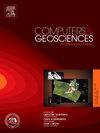TwoStream-EQT: A microseismic phase picking model combining time and frequency domain inputs
IF 4.4
2区 地球科学
Q1 COMPUTER SCIENCE, INTERDISCIPLINARY APPLICATIONS
引用次数: 0
Abstract
Seismic event detection, phase picking, and phase association are the most fundamental and critical steps in seismic network data processing. We propose a two-stream neural network that integrates the time domain and time-frequency domain representations for microseismic phase detection and picking. This model builds on the EQTransformer (EQT) by incorporating an additional time-frequency stream using a Short-Time Fourier Transform as input. This preserves the original time-domain network structure, while enabling the fusion of features from both domains through lateral interactions. We explore two feature-fusion strategies: fixed weighting addition and a cross-attention mechanism, resulting in two two-stream EQT (TS-EQT) models: AddTwoStream-EQT (ATS-EQT) and CrossTwoStream-EQT (CTS-EQT). We enhance the data through a multi-model average picking strategy to reduce the labeling errors. We train the models with the STEAD dataset and test them on the STEAD, DiTing and Geysers datasets. We find that the TS-EQT models are superior to the original EQT model in both learning ability and generalization performance. The cross-attention mechanism feature fusion strategy is superior to the fixed weighting addition strategy. Specifically, ATS-EQT detects 45 % more events than EQT on the Geysers microseismic dataset, the number of P-wave and S-wave picks increases by about 44 % and 48 %, respectively. CTS-EQT detects 48 % more events, and the number of P-wave and S-wave picks increases by about 52 % and 56 %, respectively. This study verifies that the frequency domain features improve the training of the original model and suggests the potential of two-stream approaches for other geophysical tasks.
TwoStream-EQT:一种结合时域和频域输入的微地震相位采集模型
地震事件检测、相位选取和相位关联是地震台网数据处理中最基本、最关键的步骤。我们提出了一种集成时域和时频域表示的双流神经网络用于微震相位检测和拾取。该模型建立在EQTransformer (EQT)的基础上,通过使用短时傅立叶变换作为输入,合并一个额外的时频流。这保留了原始的时域网络结构,同时通过横向相互作用使两个域的特征融合。我们探索了两种特征融合策略:固定权重添加和交叉注意机制,从而产生了两种两流EQT (TS-EQT)模型:AddTwoStream-EQT (ATS-EQT)和CrossTwoStream-EQT (CTS-EQT)。我们通过多模型平均挑选策略来增强数据,以减少标注错误。我们使用STEAD数据集训练模型,并在STEAD、DiTing和Geysers数据集上进行测试。我们发现TS-EQT模型在学习能力和泛化性能上都优于原始EQT模型。交叉注意机制特征融合策略优于固定权重相加策略。具体来说,ATS-EQT在Geysers微地震数据集上检测到的事件比EQT多45%,p波和s波的拾捡次数分别增加了约44%和48%。CTS-EQT检测到的事件增加了48%,p波和s波的拾取次数分别增加了52%和56%。该研究验证了频域特征改进了原始模型的训练,并为其他地球物理任务提供了两流方法的潜力。
本文章由计算机程序翻译,如有差异,请以英文原文为准。
求助全文
约1分钟内获得全文
求助全文
来源期刊

Computers & Geosciences
地学-地球科学综合
CiteScore
9.30
自引率
6.80%
发文量
164
审稿时长
3.4 months
期刊介绍:
Computers & Geosciences publishes high impact, original research at the interface between Computer Sciences and Geosciences. Publications should apply modern computer science paradigms, whether computational or informatics-based, to address problems in the geosciences.
 求助内容:
求助内容: 应助结果提醒方式:
应助结果提醒方式:


